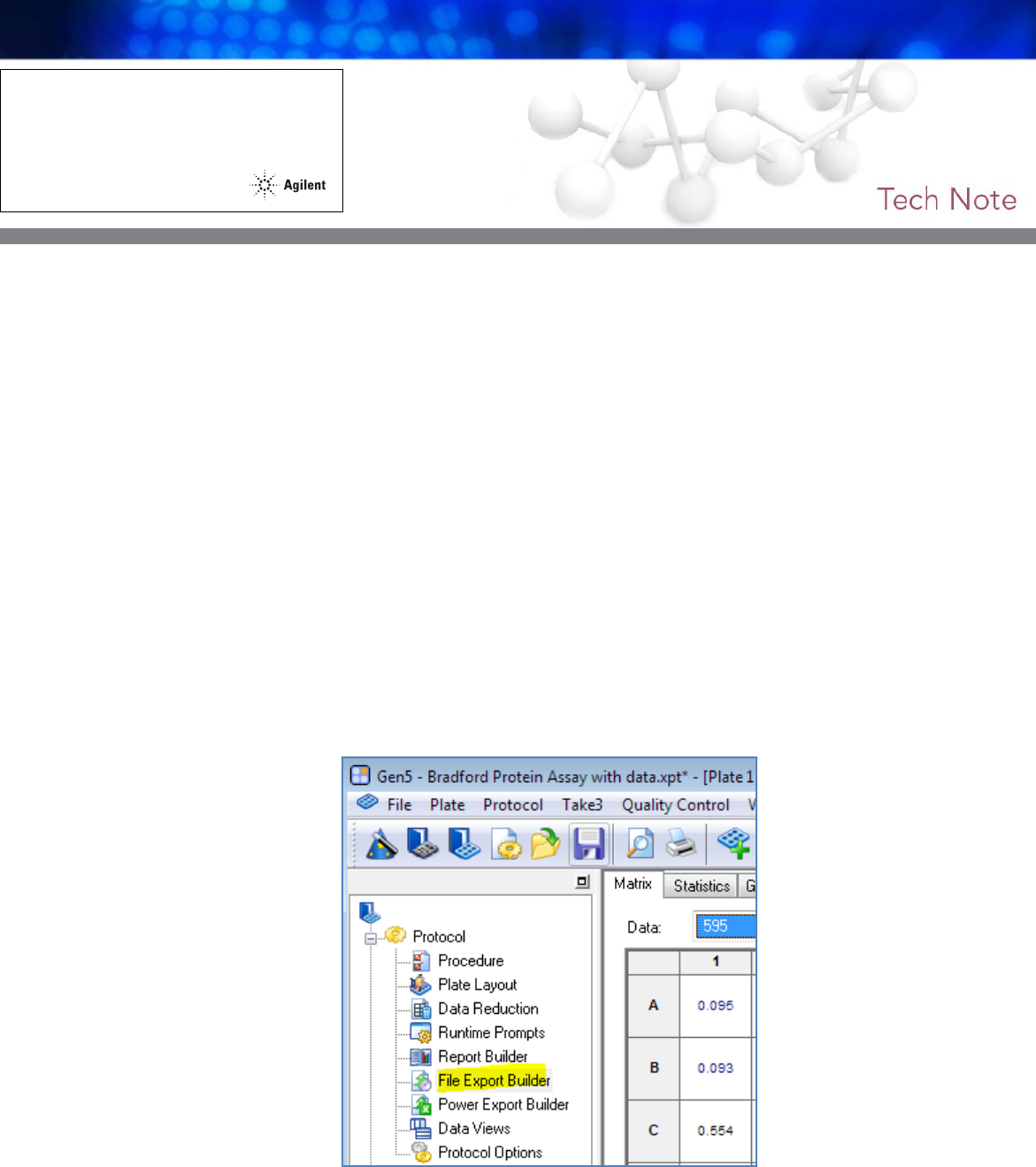
BioTek Instruments, Inc., P.O. Box 998, Highland Park, Winooski, Vermont 05404-0998 USA
COPYRIGHT © 2010 TEL: 888-451-5171 FAX: 802-655-7941 Outside the USA: 802-655-4740 E-mail: customerca[email protected]
www.biotek.com
Gen5™ File Export
Creating a File to Export to LIMs/LIS
Introduction
Many commercially available LIMs/LIS applications can easily import text files (*.txt) from instrument control and
analysis software programs like Gen5. This Tech Note describes the steps required to create a custom *.txt
containing the required data, using the File Export Builder feature in the Gen5 protocol. The File Export Builder
allows a user to create a template containing only the data that needs to be exported in the file, in either a column
(table) or matrix (grid) format. See the example screens in the Appendix.
This Tech Note also describes the Gen5 protocol options available to define the exported file path, manual or
automatic exporting and information about exporting each plate’s data to its own file or appending multiple plates to
a single file.
Step 1: Select the data to be exported using the File Export Builder
a)
Open the Gen5 protocol file
b)
Double-click the File Export Builder in the protocol me
nu:
Errata Notice
This document contains references to BioTek.
Please note that BioTek is now Agilent.
For more information, go to
www.agilent.com/lifesciences/biotek
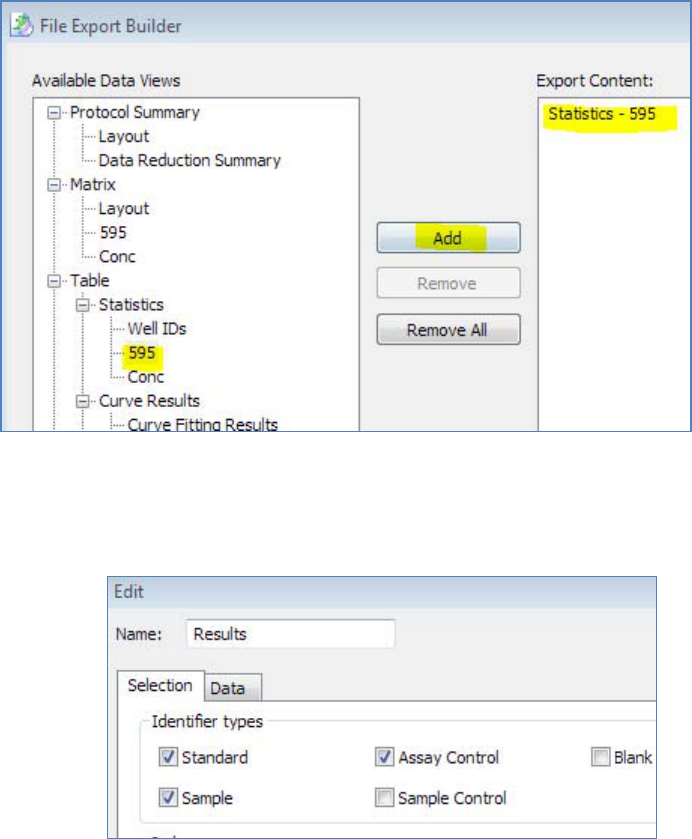
2
c) In the File Export Builder, select data to be included in the export file from the Available Data Views list.
“Matrix” data views will export data in a microplate matrix or grid format. “Table” views will export data in a
column format. Table format is more commonly used for data that will be sent to a LIMs/LIS.
In the screen below, we’ve selected 595 nm data, then clicked Add to add this to the Export Content:
d) Double-click on the item in the Export Content window to edit the contents. In this dialog, you may:
1. Change the name of the contents
2. Choose the well types to be included in the file (in the Selection tab, check all desired types)
3. In the Data tab, select the type of data to be included. Several pieces of data are included by
default. Any can be removed by right-mouse clicking and choosing Delete. Others may be added
by clicking in an open row under the Data header:
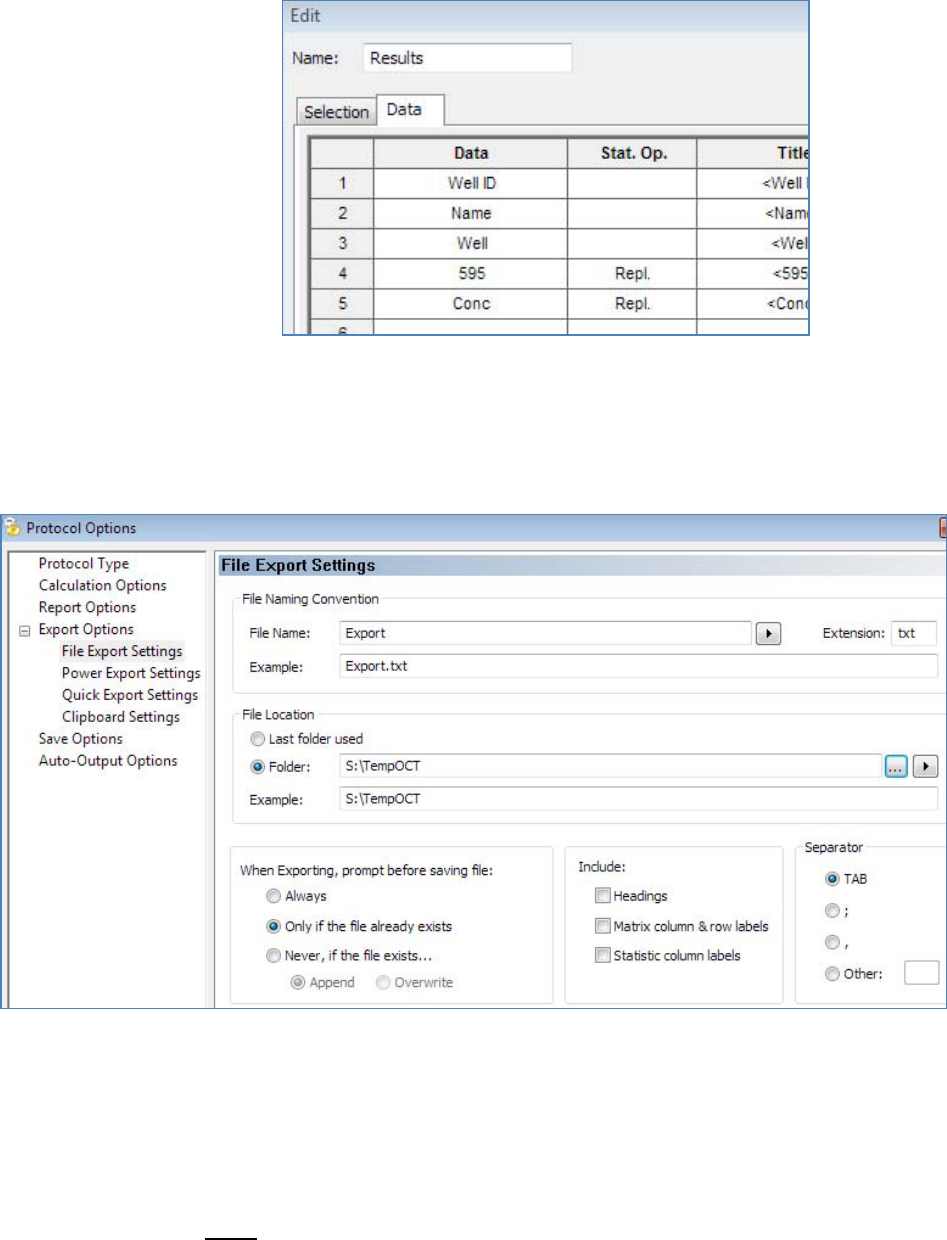
3
Step 2: Define the File Export Settings
a) The Protocol Options|File Export Settings screen is shown below. In this screen, several default
selections are made, but all can be modified.
1. The File Naming Convention should use the Extension “txt”. By default, the Experiment name is
selected as the File Name. To change this, click the right arrow at the end of the File Name field,
and choose the desired File Name parameter from the list.
2. Select the appropriate path for the File Location
3. It is best to de-select all of the “Include” options; Separator should be selected by the LIMs/LIS
requirement.
4. In the “When Exporting …” box, select the desired prompt. Note that if you wish to send multiple
plates to a single
Export file, you must choose the “Never, …” and Append option.
b) To Export the data, highlight the Plate containing the data to be exported - right-mouse click to see the
menu. Choose “File Export”. The data will be sent to the path specified in Step 2 above.
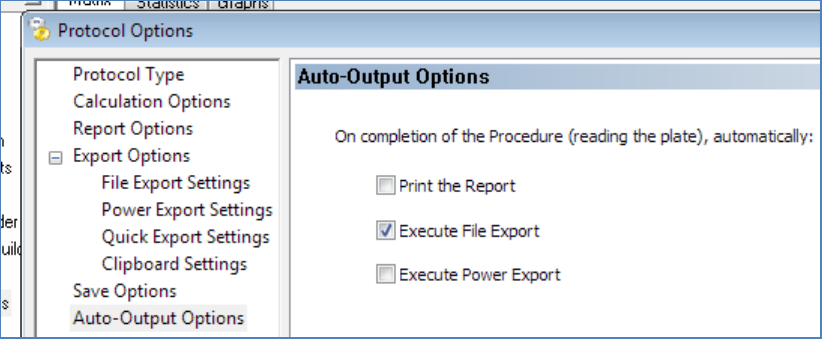
4
Step 3: Export the Data
Data can be exported from Gen5 either manually or automatically after each plate is read.
a)
To Export the data automatically after each plate is read, go to Protocol|Auto Output Options and select
Execute File Export:
Each time a plate is read in the experiment file, the data will be automatically exported to the path
defined in Step 2.
b)
To Export data manually from Gen5 to a *.txt file, first Read the plate. When reading is complete, right
mouse click on the Plate in the menu tree and choose File Export. The data will be exported to the path
defined in Step 2. If more than one plate exists in the Experiment, all plates can be highlighted and
then exported.
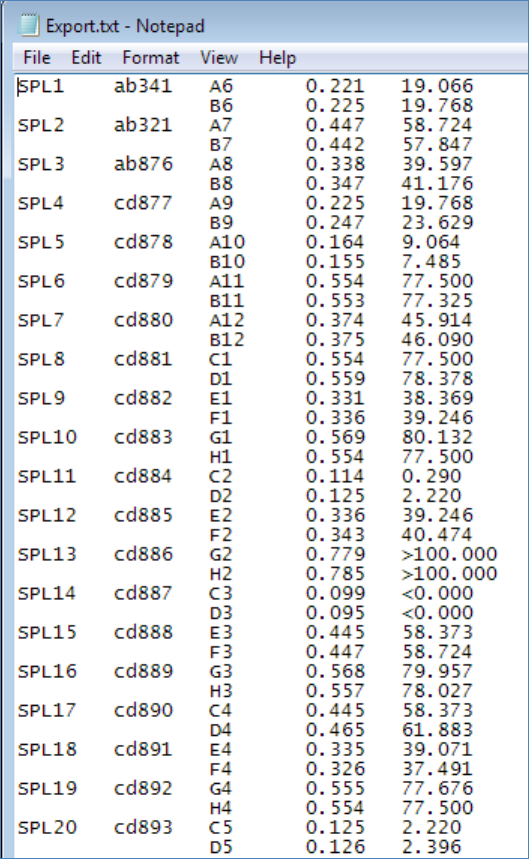
5
APPENDIX
Example of data exported in the Table format:
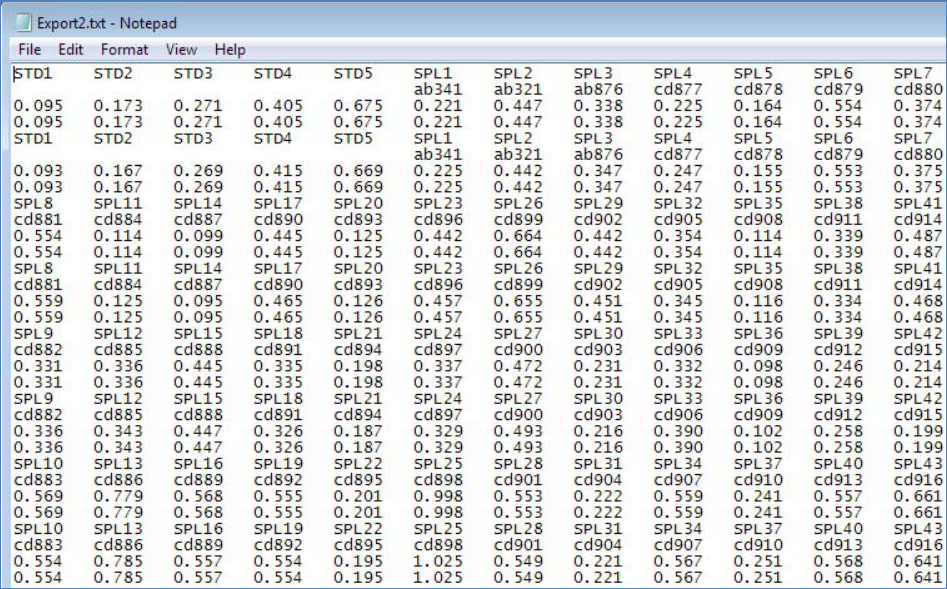
6
Example of data exported in the Matrix format:
TN102110_06
DE44335.0151157407
5994-3431EN
August 1, 2021
